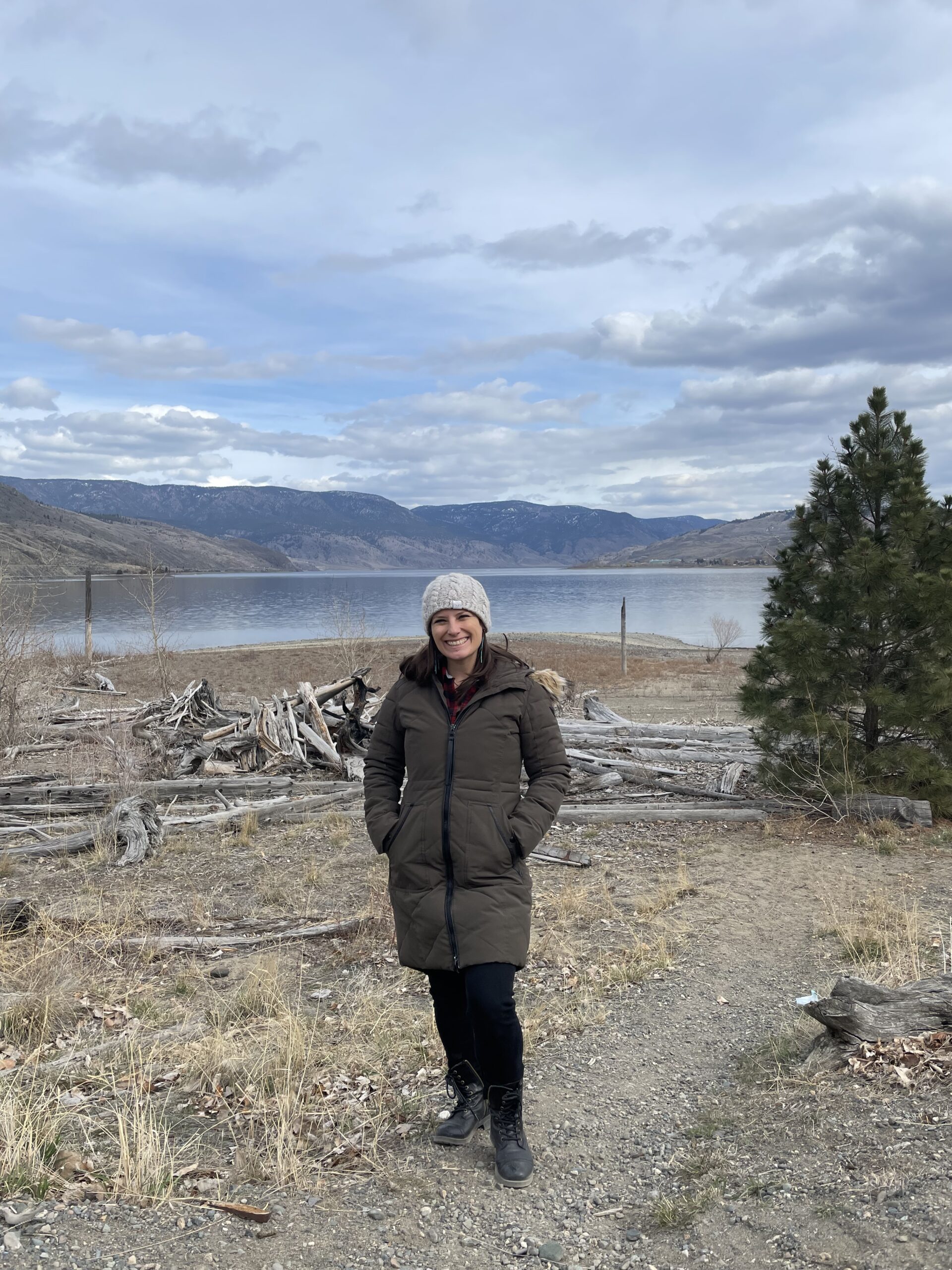Faculty Spotlight: Alana Abramson
What do we understand about the Canadian justice system?
In the Truth and Reconciliation Commission (TRC), 12out of the 94 Calls to Action directly address the criminal justice system in Canada and how it fails Indigenous people in Canada.
As of 2021, Indigenous adults make up about 30 per cent of the prison population, despite representing only about five per cent of the Canadian population. Black adults represent three per cent of the Canadian population, but slightly more than seven per cent of federal offenders. Overrepresentation is well-documented by the government.
Furthermore, a Statistics Canada report released this year identifies the lack of safety and trust towards policing experienced by Black and Indigenous people in Canada due to higher experiences of racial discrimination by police in Canada. In Toronto, a breaking report from this month indicates that Black residents were 230 per cent more likely to have a police officer point a firearm at them when they were unarmed. 230 per cent.
As Alana began the conversation by recounting her journey into the field of criminology and restorative justice, she spoke of the impact of the Harper government and their “tough on crime” strategy that disproportionately affected Black and Indigenous peoples in Canada as a result of colonialism, socio-economic marginalization, and systemic discrimination—an upsetting reality that carries into our present, as demonstrated by the statistics above. Upon seeing the systemic inequities first-hand as a Criminology major at Simon Fraser University in the 1990s, Alana was incensed—and passionate.
Then, she had taken a life-changing course on restorative justice with her to-be mentor, Dr. Liz Elliott, which offered opportunities for students to work directly with incarcerated people through facilitating workshops at the Mission Medium and Minimum Institutions—the latter formerly known as Ferndale—two federal correctional facilities in Mission, B.C
“I just made a commitment and I was all-in,” Alana added. “I was all-in after that – to work with incarcerated people.”
Until she had taken this course with Dr. Elliott, Alana had never heard of the words “restorative justice.” Although her experiences with the police as a youth growing up in Surrey had lent to a critical perspective on legal and justice systems in Canada, along with previously taken courses (including a class on police deviance at KPU and a class on corrections at SFU), Alana’s first brush with restorative justice had been through this transformative learning experience with Dr. Elliott.
Since then, from 1999 to present, Alana has dedicated herself to advocating for restorative practices in the justice system, in our communities, and in academia.
So, what is restorative justice?
Restorative justice has been defined and re-defined by numerous practitioners; as a process, as a set of values and goals, or as a movement to challenge the traditional criminal justice system and its upholding of criminalization and incarceration. Most often, restorative justice emphasizes healing, community deliberation, and a shift away from state-centred control of justice and punishment (Cunneen, 2007).
Above all, restorative justice aims to address harm at its structural roots, and to implement a process in which all of those who have experienced harm – victim or survivor, offender, community – can heal.
Restorative justice is also dependent on the consent and the needs of the person who has been harmed.
Alana has her own definition: “Restorative justice taps into ancient wisdom and community strengths to respond to harm and address the justice needs of people most affected. It is an approach that promotes accountability, relationship, and the transformation of people, relationships and structures to a place of greater peace, equity, and well-being.”
Where does this work begin? While there is no linearity to practicing restorative justice per se, Alana highlights the value and power of voices. Restorative justice can be theoretically complex, but praxis can begin with hearing, uplifting, elevating the voices of those who have been affected by the systems of criminalization and justice in Canada. Carve out centered spaces for victims and survivors. Support their healing in times when the justice system fails them. Talk to formerly incarcerated or currently incarcerated folks. Listen to them. Hear their stories. See their humanity.
“I always try to include the voices of people in the system, as well as people affected by the system, so that there is a more balanced perspective, and to recognize that it isn’t helpful to demonize individuals. People who are part of the system are doing the best that they can – within a really screwed-up system,” said Alana.
To drive this point home, we only need to look towards a report released by Office of the Correctional Investigator in February 2022. This report demonstrated a racial bias within Canada’s prisons that disproportionately involved high ‘use-of-force’ against Black, Indigenous, and other inmates of colour. The report also notes the higher rates of suicide attempts and self-harm among these inmates.
She continued on by explaining the workshop she had begun running in 1999 under Dr. Elliott, called the Alternatives to Violence Project: “The nature of the work I do with prisoners is completely voluntary. I’m not a parole officer. I’m not a correctional officer. But what I want people to know is how many people inside want to change,” added Alana. “Almost everything we do inside a prison, and a lot of what we do in community corrections, actually makes it harder to change rather than easier.”
Through the Alternatives to Violence Project, there is a role for community members like Alana in the prison. Everyone participates voluntarily, and nobody is paid or gets parole in participating. There is, in essence, an equality. Alana has held a volunteer position with this workshop for over 20 years.
In the past ten years, Alana has also refined her thinking to be more survivor and victim-focused. In addition to working with those who have committed acts of violence, she now works with people who have lost loved ones to homicide and is developing resources in trauma-informed restorative justice. Through this work, she has once more been transformed through listening to victims who have different ideas of what support and healing may look like for them—specifically, individually, subjectively. While there is anger and grief, it is not always vengeful and punitive. Here, too, restorative justice may take on many forms, but is no less important.
What is the end result of this work? Community-building and healing.
Picture this: you are standing in line at Tim Horton’s, or sitting on the SkyTrain heading home, or you are attending an event with your faith community. There are many faces around you; some that you may know, some you may only recognize, and many that you have likely never seen before and will never see again. Regardless, they all carry their own stories – and as do you. They may have been victims, they may have been formerly incarcerated, they may have been both or neither. It doesn’t matter. Like you, they are human. Like you, they belong to a space that allows for rebuilding, restoration, and reparations.
This, Alana reminds us, is community. Wherever we are in community, victims and formerly incarcerated people are too.
If we build a community that centers around care and respect, then we can also challenge the stereotypes and judgment that continue to harm victims. In a victim-centred space, we can create opportunities to bring together those who have experienced a critical incident, and to give them the safety to speak about how they were affected and—ultimately—where they can find support. As it stands, many victims don’t feel welcomed in community spaces, they feel judged for what has happened to them.
Rather than fixating on points of origin or points of conclusions, Alana urges us to discard judgment and think about how we can understand each other through our stories of transit. Where do people arrive to where they are, and how do they become? In what ways are our life pathways, in the multitudinous ways they exist, affected by the structural complexities that enact harm upon us—particularly the interlocking axes of racial violence, gendered racial violence, class-based violence—and then further institutionalized to re-perpetuate trauma?
In other words, how can we learn to humanize one another and to heal through the generative practice of care?
“There is us in them,” Alana added. “I think what Dr. Elliott showed me is that we have so much power as a community to make our community safer. We have the power as individuals to contribute to change. We cannot rely on professionals—the police or prison systems—to help us out of these problems. We have the power to actually create more safety.”
Carceral logic also infiltrates the structures of which our school systems are built. As a Criminology professor at Kwantlen Polytechnic University, Alana helps to impart restorative practices to both students, student services, and faculty. Currently, she is working on a project for the university on restorative justice and academic integrity, with plans for a self-paced module, educational video, and policy recommendations, among other deliverables expected soon.
As part of this project, Alana teaches how to bring restorative justice into our daily lives:
“This isn’t just some alternative to punishment that happens in the justice system,” Alana explained, “this is a way of being. I try to bring that way of being into my encounters with students.”
During our conversation, Alana provided us with an example in a classroom: in cases of suspected academic integrity violations, or even with conflict in class-based group projects, Alana starts with a conversation where she invites accountability. That accountability then leads to a collaborative conversation about what to do and how to repair the harm.
Rather than having a faculty member begin the conversation either through punitive action or, for example, through imposing a course on academic citations on the student—a restorative approach moves away from an offender-focused perspective and instead focuses at the levels of harm, and how to address this harm. It invites the multiple perspectives of all of those who are impacted.
Ultimately, the goal is to work towards a reciprocal understanding of what harm has been caused, what all affected parties need to do together, and where to find the right support to address this harm. While the outcome could still be the same – whether the student receives a zero, or they still take the course on how to cite –it’s how we get there. Once again, it’s about our stories of transit.
Restorative principles create room for vulnerability, empathy, intentionality, and trust. When we begin to understand how systems of incarceration—whether in our justice system, in our communities, or in a school setting—conditions us to internalize punishment when we make mistakes, we understand how we can better support our students to instead address harm and conflict with safety and respect.
At times, academia can be a cold machine. How, then, can we infuse the ethics of care, generosity, reciprocity, and accountability in academia through restorative justice?
Alana answers this question towards the end of our conversation: “I really see Kwantlen as a place that should have no boundaries between community and the university. And I really love creating opportunities for community to come and feel safe and connected, and part of our quality community. That’s really important to me.”




